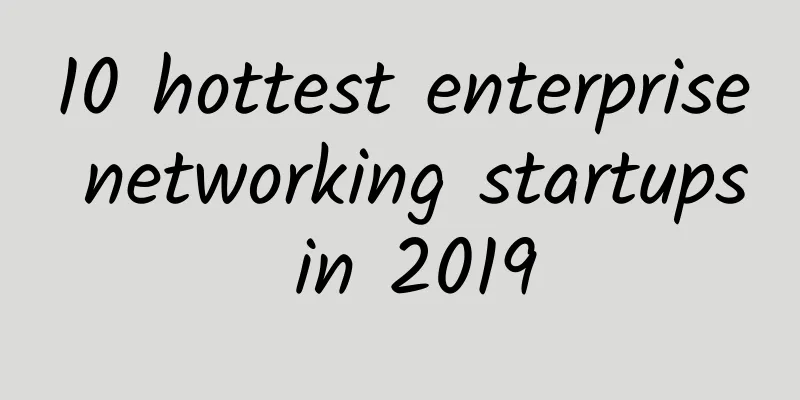Smart Encyclopedia | What is a 400G optical module?

|
As more and more people use the internet, the amount of work that data centers need to handle has steadily increased. This is due in part to the increasing number of internet users creating and organizing data. However, this is also related to the rise of new technologies such as cloud computing, big data, and mobile Internet. In the past, 400G (or even 800G) optical modules seemed a bit redundant. But now, more and more suppliers are beginning to adopt them. So what exactly are 400G optical transceivers? What are the different categories? This article will explore the answers to these questions and more so that everyone can better understand the future of optical transceivers. What is a 400G optical module?First, let’s understand the basic definition. 400G optical module refers to a specific type of optical module that can send and receive data at a rate of 400G per second. The ports on a 400G optical module can be configured in a variety of different ways depending on the setup. Some common ones include:
It is common to use these types of optical modules in data centers that require high transmission power. How are 400G optical modules different from other optical modules?The most significant difference between 400G optical modules and other models such as 10G or 25G is the carrier application. 10G modules are used for single-carrier applications, while 400G modules are used to handle much more complex multi-carrier applications. Because they are designed for multi-carrier applications, 400G optical modules are much more expensive than their older counterparts. What types of 400G optical modules are there?
The word OSFP stands for Quad Small Form Factor Pluggable and is an older version of the 400G optical module. This type of module has two obvious problems. First, it is very large, which is a problem for data centers that do not have the space to accommodate it.
Same as the 400G QSFP module; however, the extra two Ds stand for double density. It is called this and comes with an extra row of four-lane interfaces. Therefore, the 400G QSFP-DD module has a total of 8 interfaces.
Like the 400G QSFP-DD module, the 400G CFP8 module also supports up to 8 channels. It was originally an extension of the 400G CFP4 module with fewer channels.
If you want a module that is not too expensive and has a high-density solution, you can look at the 400G CDFP module. This device comes with 16 different channels and is pluggable.
The last one is the 400G COBO module, which stands for Consortium on-board optics. The 400G COBO module is non-pluggable, which means that all components are located on the PCB of the device. How to find a high-quality 400G optical module supplierWhen looking for a 400G optical module provider, the first thing to consider is experience. The longer an enterprise has been experimenting with 400G optical module installations, the more advice it can provide on optimal power management. Secondly, make sure the specific factors you want are available. Finally, make sure you test all cables after installation. That way, you know everything is operating at peak efficiency. The importance of 400G optical modules to large data centersAccording to Forbes, the two biggest challenges facing data centers today are the need for upgrade preparation and infrastructure challenges. The Internet and user needs are developing too fast, and many data centers cannot keep up. That’s why new technologies like 400G optical modules must be considered, especially if the center is processing large amounts of data. This may feel like a huge investment. But keep in mind that in a few years, these types of optical modules may become the standard. So by upgrading now, you will likely be one step ahead. |
<<: How does 5G promote innovation in manufacturing?
>>: Ruijie Networks kicks off its "Renewal Action" with the 2023 National Partner Conference
Recommend
How to use 4G module to transmit temperature and humidity data to onenet via MQTT protocol
[[397604]] This experiment uses the SIM7600CE 4G ...
Five-minute technical talk | Semantic communication technology helps build a safe countryside
Part 01 Semantic Communication Technology The rap...
Will edge computing replace cloud computing? Has the strongest dark horse in the 5G era emerged?
Computers are hundreds of miles apart, but the la...
CloudCone: Large hard disk VPS annual payment starts at $17.77, Los Angeles MC data center, KVM architecture
CloudCone is a foreign hosting company founded in...
Strong partner ecosystem helps Denodo grow in Greater China
Beijing, March 10, 2021 - Denodo, a leader in dat...
6G network, what application scenarios will it have in the future?
Looking back at the entire development history of...
Yecao Cloud: Hong Kong VPS annual payment starts from 139 yuan, Hong Kong dedicated server starts from 199 yuan/month
Yecaoyun is a Chinese hosting company founded in ...
In the 5G era, will programmers lose their jobs or continue to be popular?
Recently everyone has been discussing such a thin...
EtherNetservers: Los Angeles VPS starts at $14.95 per year, 1GB/40GB/1TB, supports Alipay/PayPal
EtherNetservers' special annual VPS has alway...
Practice on optimizing VUA forwarding performance of vivo unified access gateway
VLB stands for vivo load balance. As the IDC traf...
Unity Online Technology Conference officially opens, with major upgrades to hardcore technology
Beijing, November 17, 2020 - On the evening of th...
Future development and current progress of China's Internet of Things industrialization
It cannot be denied that we are experiencing an e...
In-depth study of principles - TCP long connection and heartbeat keep alive
Preface Many Java programmers may only have a thr...
In the data era, Ruishu Information helps operators build a security line of defense for application data with five tips
On December 10, 2021, the "2021 (11th) Telec...
Attention to those whose phone numbers begin with 13, 15, 18, etc.! There may be a big problem with your data plan!
Users whose mobile phone numbers begin with 13, 1...









